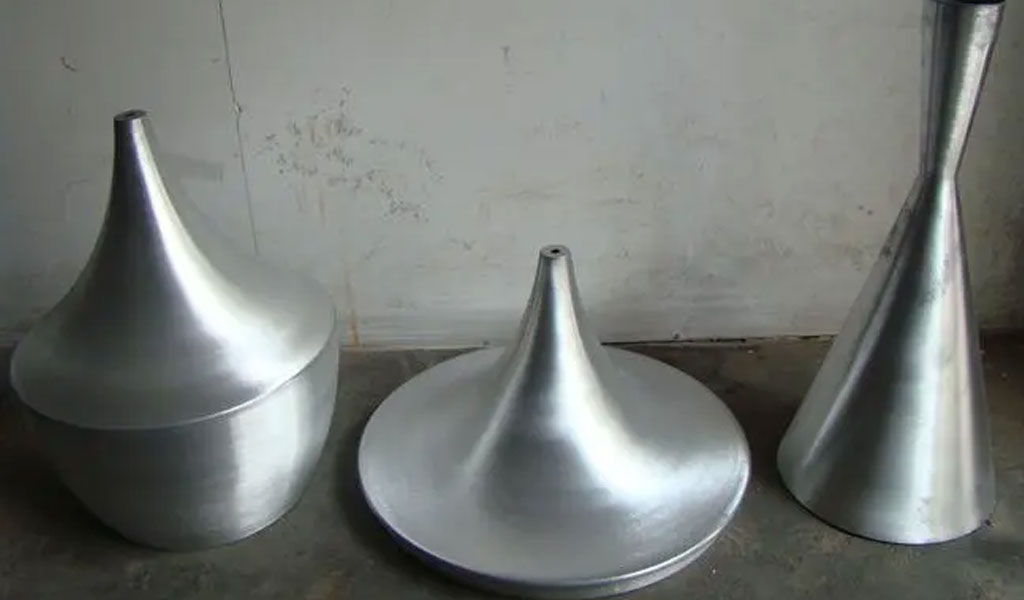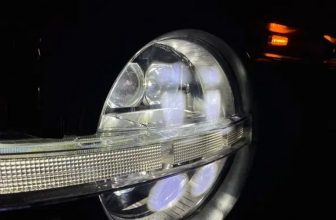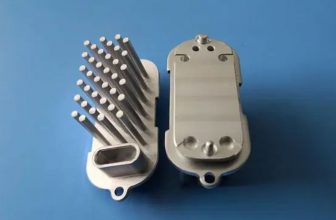
Spinning technology, traditionally utilized in the metalworking industry for crafting symmetrical objects such as pots, pans, and other cylindrical items, has found a new and significant application in the creation of reflectors for LED lights. LED lighting, which stands for Light Emitting Diode lighting, has revolutionized the illumination industry due to its efficiency, longevity, and environmental benefits. However, to maximize the efficiency and directionality of LED lights, high-quality reflectors are essential.
Reflectors play a critical role in enhancing the light output and directing the light where it is needed. This guide will explore how spinning technology can be used to metal spinning high-quality reflectors for LED lights, focusing on the process, materials, benefits, and practical applications.
Overview of Spinning Technology
Spinning, also known as metal spinning or spin forming, is a metalworking process by which a flat sheet of metal is formed into a desired shape through the application of force while the metal is rotated at high speed. This process is akin to the way a potter shapes clay on a wheel, but it involves metals and other rigid materials. The primary equipment used in spinning includes a lathe and forming tools, which can be manually or CNC-controlled.
History of Spinning Technology
Metal spinning has been in use for centuries, with its origins tracing back to ancient Egypt and China, where artisans would spin metals to create household utensils and ceremonial objects. The technique has evolved significantly over the years, particularly with the advent of CNC (Computer Numerical Control) technology, which allows for greater precision and consistency in the production process.
Modern Spinning Techniques
Modern spinning technology encompasses a range of techniques including:
- Conventional Spinning: The most basic form where a flat metal disc is formed into a symmetrical part.
- Shear Spinning: Involves thinning the material while shaping it, often used for creating conical shapes.
- Tube Spinning: Used to create hollow, cylindrical parts.
- Flow Forming: Similar to shear spinning but used for creating high-strength components by elongating the metal.
Advantages of Spinning Technology
Spinning technology offers several advantages:
- Versatility: Capable of producing a wide variety of shapes and sizes.
- Material Efficiency: Minimal wastage of material compared to other forming techniques.
- Strength: The spinning process can enhance the strength and durability of the metal.
- Cost-Effectiveness: Lower tooling costs compared to stamping or casting.
- Precision: CNC spinning allows for high precision and repeatability.
Materials Used in Reflector Manufacturing
Common Materials for LED Reflectors
The choice of material for LED reflectors is critical in achieving the desired optical performance. Common materials include:
- Aluminum: Widely used due to its excellent reflectivity, light weight, and thermal conductivity.
- Stainless Steel: Offers high durability and good reflectivity but is heavier and more expensive.
- Polycarbonate: A plastic material that can be metallized to enhance reflectivity, offering a lightweight and impact-resistant option.
- Acrylic: Another plastic option, known for its clarity and ability to be easily shaped and metallized.
Material Properties and Their Impact
The properties of the material directly impact the efficiency and quality of the reflector. Key properties to consider include:
- Reflectivity: Higher reflectivity means better light output and efficiency.
- Thermal Conductivity: Essential for managing the heat generated by LEDs.
- Weight: Lighter materials are preferred for ease of installation and use.
- Durability: Resistance to environmental factors such as corrosion and UV degradation.
Surface Treatments and Coatings
To enhance the reflectivity and durability of reflectors, various surface treatments and coatings can be applied:
- Polishing: Improves the surface smoothness, enhancing reflectivity.
- Anodizing: Used for aluminum to increase corrosion resistance and surface hardness.
- Metallizing: A process where a reflective metal layer is deposited on a plastic substrate, commonly used for polycarbonate and acrylic reflectors.
The Spinning Process for LED Reflectors
Design and Prototyping
The first step in the manufacturing process is the design of the reflector. This involves:
- Optical Design: Ensuring the shape and angles of the reflector maximize the light output and directionality.
- CAD Modeling: Creating a detailed 3D model of the reflector using computer-aided design software.
- Prototyping: Producing an initial prototype to test the design and make necessary adjustments.
Material Preparation
Once the design is finalized, the next step is material preparation:
- Blank Cutting: Cutting the raw material (typically a metal disc) to the required size and shape.
- Annealing: Heating the material to make it more malleable and easier to work with.
Spinning Process
The spinning process involves several key steps:
- Mounting the Blank: The metal blank is mounted on a spinning lathe.
- Initial Spinning: The blank is spun at high speed, and a forming tool is used to shape it according to the desired design.
- Intermediate Steps: Depending on the complexity of the design, several intermediate spinning and forming steps may be required.
- Final Spinning: The final shape is achieved through precise control of the forming tool and spinning speed.
Finishing Operations
After spinning, several finishing operations are performed to enhance the quality and performance of the reflector:
- Trimming: Removing excess material to achieve the desired dimensions.
- Polishing: Smoothing the surface to enhance reflectivity.
- Surface Treatment: Applying coatings or treatments to improve durability and performance.
Quality Control
Quality control is critical to ensure the reflectors meet the required specifications and standards. This involves:
- Dimensional Inspection: Ensuring the reflector dimensions are within specified tolerances.
- Reflectivity Testing: Measuring the reflectivity to ensure optimal performance.
- Durability Testing: Testing the reflector’s resistance to environmental factors such as heat, moisture, and UV radiation.
Benefits of Using Spinning Technology for LED Reflectors
Improved Light Efficiency
Spinning technology allows for the precise control of the reflector’s shape and surface finish, resulting in improved light efficiency. The ability to create highly reflective surfaces ensures that more light is directed where it is needed, enhancing the overall performance of the LED light.
Cost-Effectiveness
Compared to other manufacturing methods, spinning is cost-effective due to lower tooling costs and material efficiency. This makes it an attractive option for both small-scale and large-scale production.
Customization and Flexibility
Spinning technology offers significant flexibility in design, allowing for customized reflectors tailored to specific applications. This is particularly important for specialized lighting applications where standard reflectors may not meet the required performance criteria.
Enhanced Durability
The spinning process can improve the strength and durability of the material, resulting in reflectors that can withstand harsh environmental conditions and prolonged use. This is especially important for outdoor and industrial lighting applications.
Environmental Benefits
Spinning is a material-efficient process, resulting in minimal waste. Additionally, the use of recyclable materials such as aluminum further enhances the environmental benefits of using spinning technology for reflector manufacturing.
Applications of Spinning Technology in LED Lighting
Commercial and Industrial Lighting
In commercial and industrial settings, efficient lighting is crucial for productivity and safety. Spinning technology can produce high-quality reflectors that enhance the performance of LED lights in warehouses, factories, and office buildings.
Automotive Lighting
The automotive industry requires durable and efficient lighting solutions for headlights, tail lights, and interior lighting. Spinning technology allows for the production of custom reflectors that meet the stringent performance and durability requirements of automotive lighting.
Outdoor and Street Lighting
Outdoor and street lighting must withstand harsh environmental conditions while providing efficient illumination. Spinning technology can produce robust and highly reflective reflectors that improve the performance and longevity of LED street lights and outdoor fixtures.
Architectural Lighting
In architectural applications, lighting plays a critical role in enhancing the aesthetic appeal of buildings and public spaces. Custom reflectors produced through spinning technology can provide the precise light distribution and visual effects required for architectural lighting.
Specialized and Emergency Lighting
Specialized lighting applications, such as emergency lighting, require high-performance reflectors to ensure reliability and efficiency. Spinning technology allows for the production of reflectors that meet the specific requirements of these critical applications.
Case Studies and Examples
Case Study 1: Enhancing Warehouse Lighting Efficiency
A leading manufacturer of industrial LED lighting sought to improve the efficiency of their warehouse lighting fixtures. By utilizing spinning technology to produce high-precision aluminum reflectors, they were able to achieve a significant increase in light output and distribution efficiency, resulting in reduced energy consumption and improved working conditions in the warehouse.
Case Study 2: Custom Automotive Headlight Reflectors
An automotive company required custom reflectors for a new line of LED headlights. By partnering with a metal spinning specialist, they were able to produce reflectors that met the exact specifications for light distribution and durability. The result was a headlight with improved visibility and enhanced aesthetic appeal.
Case Study 3: Durable Outdoor Street Lighting
A city municipality needed durable and efficient LED street lights to replace outdated lighting fixtures. By using spinning technology to produce robust aluminum reflectors, they were able to achieve improved light distribution, increased durability, and reduced maintenance costs, enhancing the overall safety and appearance of the city’s streets.
Future Trends and Innovations
Advances in Spinning Technology
Ongoing advancements in spinning technology, particularly in the areas of automation and CNC control, are expected to further enhance the precision, efficiency, and versatility of the process. This will open up new possibilities for the production of even more complex and high-performance reflectors for LED lighting.
Integration with Smart Lighting Systems
As smart lighting systems become more prevalent, the demand for custom reflectors that can optimize the performance of these systems is expected to grow. Spinning technology will play a crucial role in meeting this demand by providing the flexibility and precision needed to produce reflectors that enhance the functionality of smart lighting systems.
Sustainable Materials and Processes
The push for sustainability in manufacturing is likely to drive the development of new materials and processes for reflector production. Spinning technology, with its material efficiency and compatibility with recyclable materials, is well-positioned to support these sustainability goals.
Enhanced Reflector Designs
Future innovations in reflector design, driven by advances in optical engineering and materials science, will likely lead to even more efficient and effective LED lighting solutions. Spinning technology will continue to be a key enabler of these innovations, providing the capability to produce the complex and high-precision reflectors needed for next-generation LED lights.
Conclusion
Spinning technology offers a versatile, cost-effective, and efficient method for producing high-quality reflectors for LED lights. By leveraging the precision and flexibility of the metal cnc spinning process, manufacturers can create custom reflectors that enhance the performance, durability, and efficiency of LED lighting solutions across a wide range of applications. As technology and materials continue to advance, the role of spinning technology in the LED lighting industry is set to grow, driving further innovations and improvements in lighting performance and sustainability.








